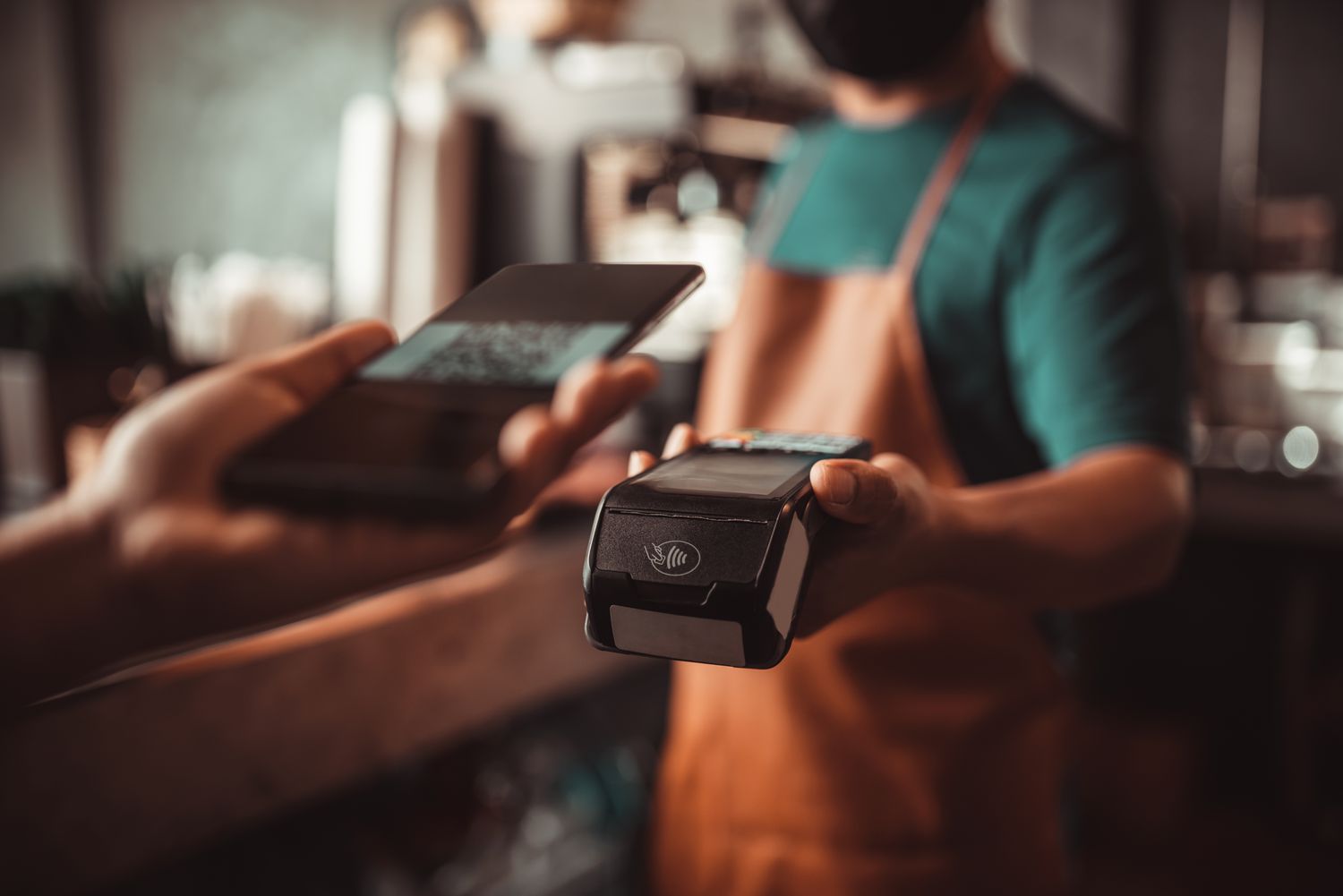
#Tipping #Culture #Control #Skip #Tip
We’re all familiar with the following situation: You’ve just ordered a coffee, and after you tap your credit card, the payment kiosk spins around to show the suggested tip amount of 25% to 30%. What do you do?
Nowadays, many Americans are confused about tipping protocols. According to the results of the survey he published Pew Research Centerof nearly 12,000 American adults, only a third said it was very easy or very easy to know whether or how much to tip for different services.
Although there’s no definitive way to define tipping rules, here’s what you should know about the history of tipping, recent developments that have changed tipping culture, and how to handle tipping from now on.
Key takeaways
- Workers who earn more than $30 a month are considered tipped employees, and often receive a base wage of just $2.13 per hour.
- Digital payment systems have increased the pressure on tipping, leading to “guilt tipping” in situations where a tip may not be expected.
- Tipping is now becoming more common across various services, as many Americans do not know the etiquette, which contributes to the rise in tip amounts – so-called “inflation.”
- A tip is not required for counter service, and no additional tip is required if there is an automatic gratuity. If the service is poor, it’s okay to tip less, but aim for no less than 10%.
The development of tipping culture
Post-Civil War origin
Tipping in the United States has a complicated history. The practice was largely unknown in the United States before the Civil War, but gained momentum as wealthy Americans returned from visiting Europe, bringing the practice home with them. Tipping is also said to reflect a darker side of American history, as it grew when the restaurant and hospitality industries began to employ newly emancipated black women and men. They were often not offered wages, relying instead on tips to make a living.
The rise of technology
The demand for gratuities has risen as technology has advanced, with the tipping option appearing more frequently. Digital payment systems leverage design principles that influence tipping behavior. For example, clicking “No tip” at a kiosk seems more difficult than deciding not to tip without prompting. This has led to a phenomenon known as “tipping guilt,” where consumers feel pressured to leave a tip.
The role of the COVID-19 pandemic
Many restaurant and hospitality workers struggled during the peak of the coronavirus (COVID-19) outbreak. Thus, tipping has increased to help support these industries. According to an analysis of tip data conducted by the National Library of Medicine, while tips per order were decreasing before the pandemic, they have increased by $1.24, thus countering the previous negative trend.
Tipping expectations don’t seem to be going down since the pandemic. This may explain why the tipping amount has remained high over the past few years, which is called “inflation” in the media.
According to survey results published by Pew Research, about 7 in 10 adults say tips are expected in more places today than they were five years ago.
Who is considered a tipped employee?
Today, many service workers depend on tips to make a living. The Department of Labor considers a worker a “tipped employee” if he or she regularly receives more than $30 per month in tips.
Under federal law, employers who offer tips only are required to pay $2.13 per hour in direct wages as long as that amount, plus tips, meets the federal minimum wage. The employer must cover the difference if the total does not reach the minimum wage.
Some states set higher minimum wages. For example, Alaska’s minimum wage is the same as the standard minimum wage ($11.73 per hour as of 2024). Other states, such as Florida and Maine, set minimum wages that exceed the federal mandate but do not match the state’s standard minimum wage.
Cities and localities may also set higher minimums in some areas. New York City has a minimum wage of $10.65 (as of 2024), which is 65 cents higher than the state’s inverse wage. New York State “quick service employees” earn the same minimum wage of $15 per hour whether they are employees or not.
Note
Tipping is a hot topic in the upcoming election, with both presidential candidates proposing to exempt tipping from taxes.
When should you tip?
When you are in a service-based organization
You should expect to tip at places like restaurants, bars, salons, and hotels. This includes servers, bartenders, hotel reps, delivery drivers, valet drivers, and more. It is also common to tip your hairdresser, nail artist, and food delivery driver.
The actual tip amount varies depending on the service, but restaurants generally follow a 15% to 20% rule. RealSimple introduces tipping etiquette guide With specific suggestions on when and how much to tip.
For food delivery apps, a fair amount can be between $3 and $5 per delivery. If weather conditions are extreme, consider adding a few extra dollars.
When to consider skipping a tip
When you pay for meter service
According to CNBC, counter workers are not expected to receive tips because they are usually paid. However, leaving a tip can be a thoughtful gesture, especially if you’re a regular customer, as it can help establish a positive relationship with staff.
When there is already a high service fee or automatic gratuity
Sometimes, restaurants actually implement an automatic gratuity, especially for larger parties. Since it’s already included, there’s usually no expectation of adding to that. With that in mind, if you have great food and service, an extra 5-10% tip is a nice way to show your appreciation.
If the service is not good
If your expectations are not met, it’s okay to tip less than usual — some people may tip as much as 10%, but it’s recommended not to go lower than that. Be aware of circumstances beyond your server’s control, such as a slow-running kitchen.
Is it rude not to tip?
Unless the service is poor, most etiquette experts recommend against tipping restaurant staff.
What professions should I not mentor?
You should not tip paid professionals. This includes teachers, plumbers, lawyers and cable techs.
How can I show appreciation if a tip isn’t expected?
For example, salaried workers, such as teachers, do not expect tips. However, there are other ways to show your thanks. Consider giving a gift card around the holidays or writing a handwritten card. Of course, offering a verbal “thank you” does not go unnoticed.
How do I know if advice is already included?
When you look at your bill, it may be listed as a “service charge” or a “gratuity.”
Bottom line
Tipping culture in the United States is shaped by history, economics, and evolving social norms. Changes in technology and the post-pandemic world have left many Americans unsure of what to do. However, researching and keeping up with developments in these practices can paint a clearer picture of the volatile outlook. By doing this, we can ultimately help both customers and employees.
#Tipping #Culture #Control #Skip #Tip




